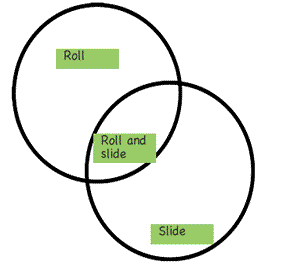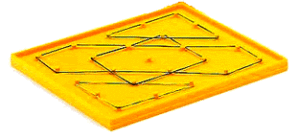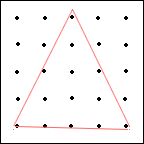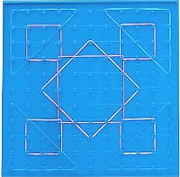Looking for preschool and kindergarten activities emphasizing geometry and spatial sense?
Help children develop their understanding of objects and shapes in their environment and help them recognize and describe attributes of shapes. The activities below are easy to integrate into daily routines.
Supplement your students understanding by reading books that talk about shapes and provide puzzles and posters with clearly illustrated shape pictures.
Integrate geometry into your learning zones. I have placed posters illustrating shapes and shape names in the dramatic play area and observed children tracing the shapes with their fingers, copying the shapes at the play table and asking each other what a certain shape was called.
What geometry and spatial skills should I teach?
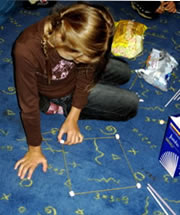
Depending on where you live, learning outcomes regarding geometry and spatial sense kindergarten skills vary. Most students are working towards:
- sorting a given set of familiar 3-D objects using a single attribute, such as size or shape, and explaining their sorting rule
- stating the difference between two given pre-sorted sets by telling the sorting rule used to sort them
building and describing 3-D objects - creating a representation of a given 3-D object using materials, such as modeling clay and building blocks
comparing their representation to the original 3-D object - describing 3-D objects using words such as big, little, round, like a box, and like an ice cream cone
- CCSS – geometry
Why give children sorting activities?
Sorting and describing 3-D objects helps students learn how to group objects. Students usually learn to first sort objects with one different attribute and then add more.
For example:
Show me all the red objects – one attribute
Show me the red triangles – two attributes
Show me the large, red, triangles – three attributes
Show me the thick, large, red triangles – four attributes
Visit more shape and space kindergarten activities at the following posts:
Attribute blocks
Sorting games
Classification games
Roll, slide, or both?
This kindergarten lesson helps students notice similarities in objects that slide and objects that roll and is a good opportunity for children to use math vocabulary.
Materials:
- Tub of geometric solids
- Ramp made of blocks and mat board
- Build the ramp with a long piece of mat board and blocks taped together (see a similar ramp here)
- Two hoops
- Word cards – Slide, roll, slide and roll
- Work with small groups of about ten students.
- Give each child a 3D shape.
- Have each child take a turn to see if their object slides or rolls down the ramp or does both.Let them try a few times.
- Put two hoops on the carpet that are intersected like a Venn diagram (see image).
- Students place objects that roll on one side, objects that slide on the other and objects that do both in the middle.
- Count how many objects in each category and record the number on a paper.
- Talk about why some did not roll or did not slide
- Record observations, record which side has fewer and which side has more.
Kindergarten activities with geoboards
Geoboards are an excellent hands-on manipulative tool to help children discover the concepts of shapes, angles, measurement, area, and perimeter. Give students plenty of time to play with the geoboards and elastic bands before trying to use them for a formal lesson.
1. Making shapes
Give each child a geoboard, a large elastic band and a picture of a square. Have the students try to make a square with their elastic and geoboard. Demonstrate first.
Don’t assume that this is easy for all students, some need you to guide their hands to begin with. Do this activity with various shapes and teach vocabulary, such as triangle, square, rectangle, corners and sides as the children form the shapes.
2. Copying pictures
Give children dotted paper (same number of dots as geoboard) with shapes drawn on them. With this kindergarten activity the students try to reproduce the pictures.
More geometry & spatial sense kindergarten activities
- Copy 3D shapes by providing students with materials such as blocks or modeling clay and having them recreate an object, such as a tissue box.
- Cover designs with pattern blocks
- Play left & right games and activities – Hokey Pokey
2D geometric shapes – Recognize, name, draw, compare, and sort shapes
- Have sets of cut out laminated shapes in various colours and sizes.
- Use them in small groups. Ask students to choose a small blue square, then have another choose a large red square.
- Students take turns asking a partner to choose certain shapes so they will have practice using geometric vocabulary.
- Let students trace the shapes to make pictures.
